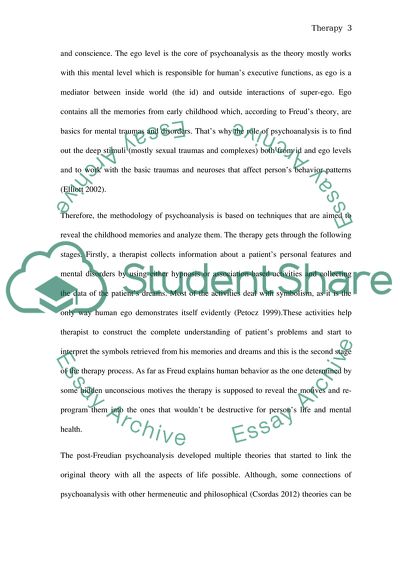Cite this document
(Psychoanalysis vs Behaviour Therapy Essay Example | Topics and Well Written Essays - 1250 words, n.d.)
Psychoanalysis vs Behaviour Therapy Essay Example | Topics and Well Written Essays - 1250 words. https://studentshare.org/psychology/1854852-compare-and-contrast-the-main-principles-in-any-two-of-the-following-psychological-therapies-psychoanalysis-behaviour-therapy-cognitive-therapy-or-humanistic-therapy
Psychoanalysis vs Behaviour Therapy Essay Example | Topics and Well Written Essays - 1250 words. https://studentshare.org/psychology/1854852-compare-and-contrast-the-main-principles-in-any-two-of-the-following-psychological-therapies-psychoanalysis-behaviour-therapy-cognitive-therapy-or-humanistic-therapy
(Psychoanalysis Vs Behaviour Therapy Essay Example | Topics and Well Written Essays - 1250 Words)
Psychoanalysis Vs Behaviour Therapy Essay Example | Topics and Well Written Essays - 1250 Words. https://studentshare.org/psychology/1854852-compare-and-contrast-the-main-principles-in-any-two-of-the-following-psychological-therapies-psychoanalysis-behaviour-therapy-cognitive-therapy-or-humanistic-therapy.
Psychoanalysis Vs Behaviour Therapy Essay Example | Topics and Well Written Essays - 1250 Words. https://studentshare.org/psychology/1854852-compare-and-contrast-the-main-principles-in-any-two-of-the-following-psychological-therapies-psychoanalysis-behaviour-therapy-cognitive-therapy-or-humanistic-therapy.
“Psychoanalysis Vs Behaviour Therapy Essay Example | Topics and Well Written Essays - 1250 Words”. https://studentshare.org/psychology/1854852-compare-and-contrast-the-main-principles-in-any-two-of-the-following-psychological-therapies-psychoanalysis-behaviour-therapy-cognitive-therapy-or-humanistic-therapy.


